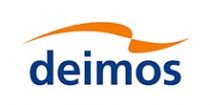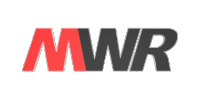Global Medical Disinfectant Wipes Market Report to 2027 - Size, Share & Industry Trends Analysis Report - ResearchAndMarkets.com
The "Global Medical Disinfectant Wipes Market Size, Share & Industry Trends Analysis Report By Distribution Channel, By Type, By Application (Hospitals & Clinics, Dental Clinic, Nursing Home, and Others), By Regional Outlook and Forecast, 2021-2027" report has been added to ResearchAndMarkets.com's offering.
The Global Medical Disinfectant Wipes Market size is expected to reach $5.6 billion by 2027, rising at a market growth of 6.9% CAGR during the forecast period.
Wipes are a necessary sanitary product for maintaining hygiene and cleanliness in homes and environments. The personal care sector arose as people became more conscious of the importance of health and hygiene. Manufacturers such as Kimberly-Clark Corporation, Johnson & Johnson, Edgewell Personal Care, Rockline Industries, and Procter & Gamble are concentrating their efforts on inventing diverse sized, shaped, and coloured hygienic sanitary items in order to appeal to consumers.
Disinfectant wipes are specialized wipes that are used to guard against viruses, germs, and other hazardous microorganisms. Textile materials such as cellulosic fibers and thermoplastic fibers are used in the majority of disinfection wipes. Cotton, viscose, wood pulp, and lyocell are examples of cellulosic fibres. Polyethylene terephthalate and polypropylene are examples of thermoplastic fibres. Disinfectant wipes' overall effectiveness and efficacy in surface cleaning and hand sanitization are heavily influenced by their chemical composition.
DIWs (disinfectant-impregnated wipes) are towels soaked with diluted disinfectant and other chemical compounds such as surfactants, preservatives, enzymes, and fragrances, among others. When two materials collide, their interaction is not insignificant and frequently has an impact on their original function. The following elements of the wipe, application method, disinfectant, interaction between them, wiping strategy, and storage period are all factors that could potentially influence the system's disinfection efficacy.
As customers have become more environmentally concerned and seek for sustainable product choices, the demand for biodegradable disinfection wipes has grown dramatically. Biodegradable disinfection wipes are being developed by major brands, which are investing considerably in R&D.
Market Growth Factors:
Increasing requirement for cleanliness & sanitation
The demand for bathroom and toilet tissues is increasing as people become more concerned about their personal hygiene. In addition, rising air pollution and dust difficulties have boosted housekeepers' use of kitchen tissue to efficiently clean utensils and other kitchenware items. The growing popularity of nuclear families around the world is driving up demand for cleaning supplies.
Various governments have done a number of initiatives to raise public awareness about the importance of maintaining basic hygiene. The pandemic of COVID-19 has raised public awareness about the significance of maintaining a minimal degree of sanitation in all places. The majority of diseases are caused by unsanitary conditions, which either cause them or aid in their transmission. As a result, government or non-government groups' campaigns have aided in raising awareness and, as a result, increased demand for medical disinfectant wipes.
Rising usage of bio-degradable material for sustainable production of wipes
Manufacturers have been forced to develop in biodegradable wipes as consumer awareness of the environmental impact of disposable disinfection wipes has grown. They are putting more effort into developing products that are manufactured from renewable and sustainable materials. Disinfectant wipes manufacturers are working to provide products that are suitable with static-sensitive surfaces and equipment. Robust biodegradable disinfection wipes are gaining popularity in the market for treating extremely contaminated regions that need the most effort.
Marketing Restraining Factor:
Availability of other substitute products
The product's demand is likely to be limited due to the widespread availability of hygiene and cleaning items like towels, brushes, handkerchiefs, and other surface cleaners. Furthermore, growing concerns about deforestation, severe fire, rain, and temperature rise as a result of excessive tree cutting hinder enterprises' ability to obtain sufficient raw materials to make pulp and paper-based products, disrupting supply. Disinfectant sprays are cost-effective and have minimum impact on humans and environment, which is compelling medical authorities to opt for them instead of disinfectant wipes.
Market Segments Covered in the Report:
By Distribution Channel
- B2B
- B2C
- Pharmacies/Drug Stores
- Hypermarkets/Supermarkets
- Online
- Others
By Type
- Surface Disinfectant Wipes
- Germicidal Disposable Wipes
- Hydrogen Peroxide Disinfectant Wipes
- Others
By Application
- Hospitals & Clinics
- Dental Clinic
- Nursing Home
- Others
By Geography
- North America
- US
- Canada
- Mexico
- Rest of North America
- Europe
- Germany
- UK
- France
- Russia
- Spain
- Italy
- Rest of Europe
- Asia Pacific
- China
- Japan
- India
- South Korea
- Singapore
- Malaysia
- Rest of Asia Pacific
- LAMEA
- Brazil
- Argentina
- UAE
- Saudi Arabia
- South Africa
- Nigeria
- Rest of LAMEA
Key Market Players
- Steris PLC
- 3M Company
- The Clorox Company
- Metrex Research, LLC
- Maxill, Inc.
- Sunshine Global LLC
- Kimberly-Clark Corporation
- PDI Healthcare, Inc.
- Reckitt Benckiser Group PLC
- Weiman Products, LLC
For more information about this report visit https://www.researchandmarkets.com/r/in321t
View source version on businesswire.com: https://www.businesswire.com/news/home/20220516005746/en/




